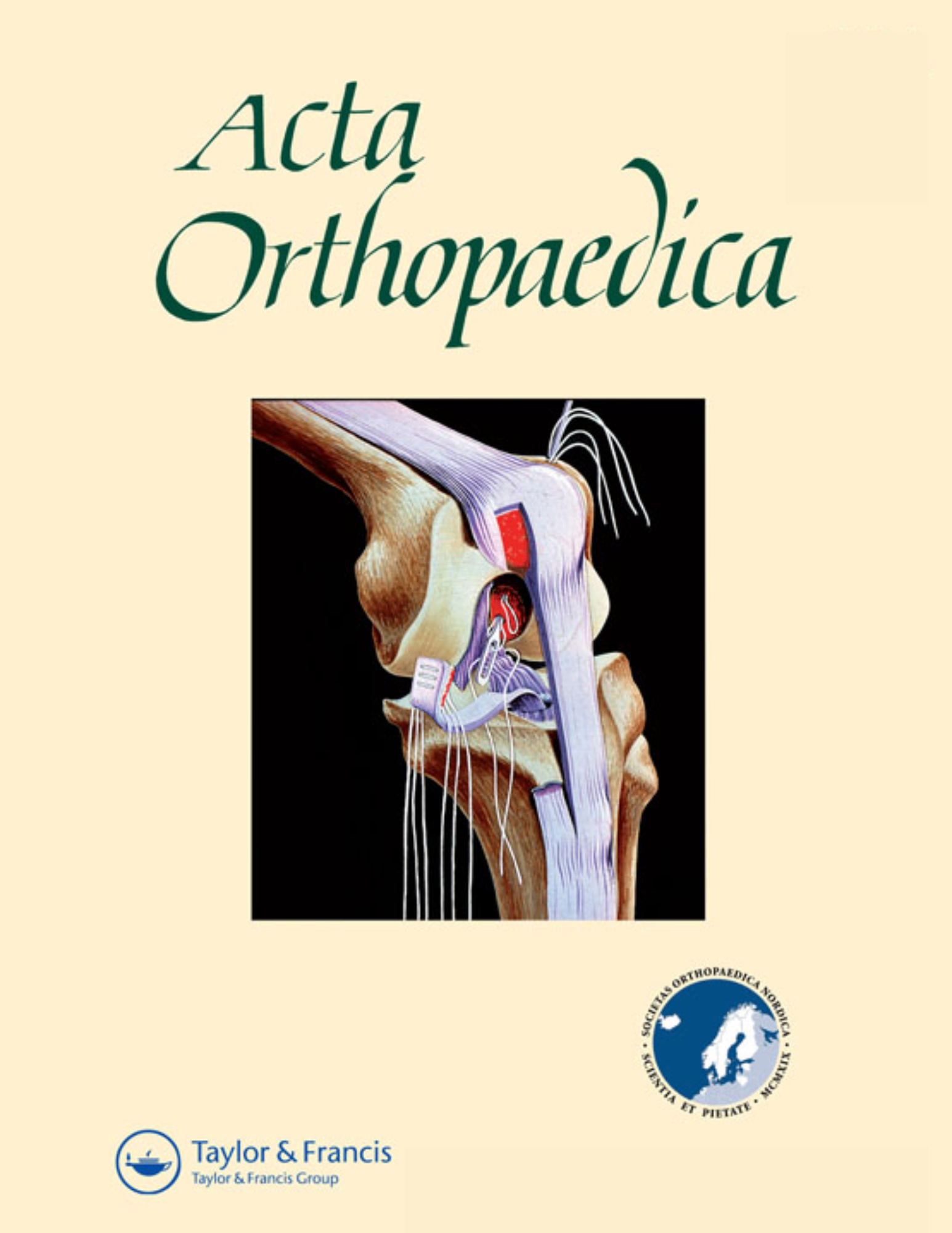
No adverse effects seen with early full weight bearing after total hip arthroplasty

No adverse effects seen with early full weight bearing after total hip arthroplasty
Immediate weight bearing after uncemented total hip arthroplasty with an anteverted stem: A prospective randomized comparison using radiostereometry
Acta Orthop. 2007 Dec;78(6):730-8Synopsis
43 patients undergoing uncemented total hip arthroplasty (THA) with hydroxyapatite coating and anteverted stem were randomized to undergo one of two procedures postoperatively. The first group participated in early full weight bearing while the second group participated in early partial weight bearing. The primary outcomes were migration of the stem and cup, as well as the penetration of the femoral head. Results at the 3-month follow-up indicated there were no adverse effects on early full weight bearing after THA.
Was the allocation sequence adequately generated?
Was allocation adequately concealed?
Blinding Treatment Providers: Was knowledge of the allocated interventions adequately prevented?
Blinding Outcome Assessors: Was knowledge of the allocated interventions adequately prevented?
Blinding Patients: Was knowledge of the allocated interventions adequately prevented?
Was loss to follow-up (missing outcome data) infrequent?
Are reports of the study free of suggestion of selective outcome reporting?
Were outcomes objective, patient-important and assessed in a manner to limit bias (ie. duplicate assessors, Independent assessors)?
Was the sample size sufficiently large to assure a balance of prognosis and sufficiently large number of outcome events?
Was investigator expertise/experience with both treatment and control techniques likely the same (ie.were criteria for surgeon participation/expertise provided)?
Yes = 1
Uncertain = 0.5
Not Relevant = 0
No = 0
The Reporting Criteria Assessment evaluates the transparency with which authors report the methodological and trial characteristics of the trial within the publication. The assessment is divided into five categories which are presented below.
4/4
Randomization
3/4
Outcome Measurements
2/4
Inclusion / Exclusion
4/4
Therapy Description
3/4
Statistics
Detsky AS, Naylor CD, O'Rourke K, McGeer AJ, L'Abbé KA. J Clin Epidemiol. 1992;45:255-65
The Fragility Index is a tool that aids in the interpretation of significant findings, providing a measure of strength for a result. The Fragility Index represents the number of consecutive events that need to be added to a dichotomous outcome to make the finding no longer significant. A small number represents a weaker finding and a large number represents a stronger finding.
Why was this study needed now?
Early weight bearing is often recommended and administered following total hip arthroplasty (THA), but there is still a lack of evidence to support this procedure. Some recent studies have examined clinical results in early weight bearing but there have yet to be any studies where analysis is performed using radiostereometry. This study examines the outcomes of early full and partial weight bearing after THA using radiostereometry to assess migration of the stem and cup as well as penetration of the femoral head.
What was the principal research question?
What are the outcomes of early full and partial weight bearing after uncemented total hip arthroplasty on migration of the stem and cup, as well as the penetration of the femoral head in patients with hip osteoarthritis at 3 months?
What were the important findings?
- The partial weight bearing group (control) had a mean proximal (+)/ distal (-) migration of the stem of -0.14 mm (-1.93-0.11) at 3 months compared to the full weight bearing group (intervention) which had a migration of -0.31 mm (-4.30-0.16). (p=0.6)
- The mean migration at the 1-year follow-up was -0.17 mm (-2.18-0.21) for the partial weight bearing group and -0.28 mm (-4.31-0.11) for the full weight bearing group. (p=0.9)
- No significant differences were seen in stem rotations between the two groups. (p>0.2)
- Both groups had similar cup translations, rotations, and femoral head penetration. (p>0.1)
What should I remember most?
Full weight bearing immediately after uncemented total hip arthroplasty (THA) is justified under the conditions of this study. No adverse effects were seen in patients undergoing the early full weight bearing procedure initially and up to the 1-year follow-up after THA.
How will this affect the care of my patients?
Full weight bearing after THA is a justifiable option for postoperative management in patients based on the findings of this study. However, further trials are required to assess if early weight bearing provides clinically significant improvements in functional outcomes for patients undergoing THA.
Learn about our AI Driven
High Impact Search Feature
Our AI driven High Impact metric calculates the impact an article will have by considering both the publishing journal and the content of the article itself. Built using the latest advances in natural language processing, OE High Impact predicts an article’s future number of citations better than impact factor alone.
Continue



 LOGIN
LOGIN

Join the Conversation
Please Login or Join to leave comments.